The projector market doesn’t move particularly quickly. Most companies replace their models every few years and overall innovation is fairly slow. While there is certainly improvement over projectors from 10 to 20 years ago, that improvement is mild compared to the rapidly evolving TV market. That is, with one exception. The last few years has seen the rise in UST, or ultrashort throw, projectors. These short boxes don’t even look like projectors, nor do they install like one. Instead, they sit on a cabinet mere inches from a wall and are able to project 100-plus inch images.
With the promise of simple installations and impressive brightness specs, all wrapped with some elaborate marketing, UST projectors seem like the next big thing in the usually staid projector world. With companies both new and old coming out with models regularly, it sure seems like these weird projectors are the going to be huge.
However, they’re expensive. They’re expensive not just in terms of actual dollars, but especially when you compare them to more traditional projectors. Worse, the technology inside isn’t that different. In some key ways, it’s exactly the same. So are you paying more for similar or worse performance, and all for the promise of easier installation? Let’s take a closer look.
What’s a UST?
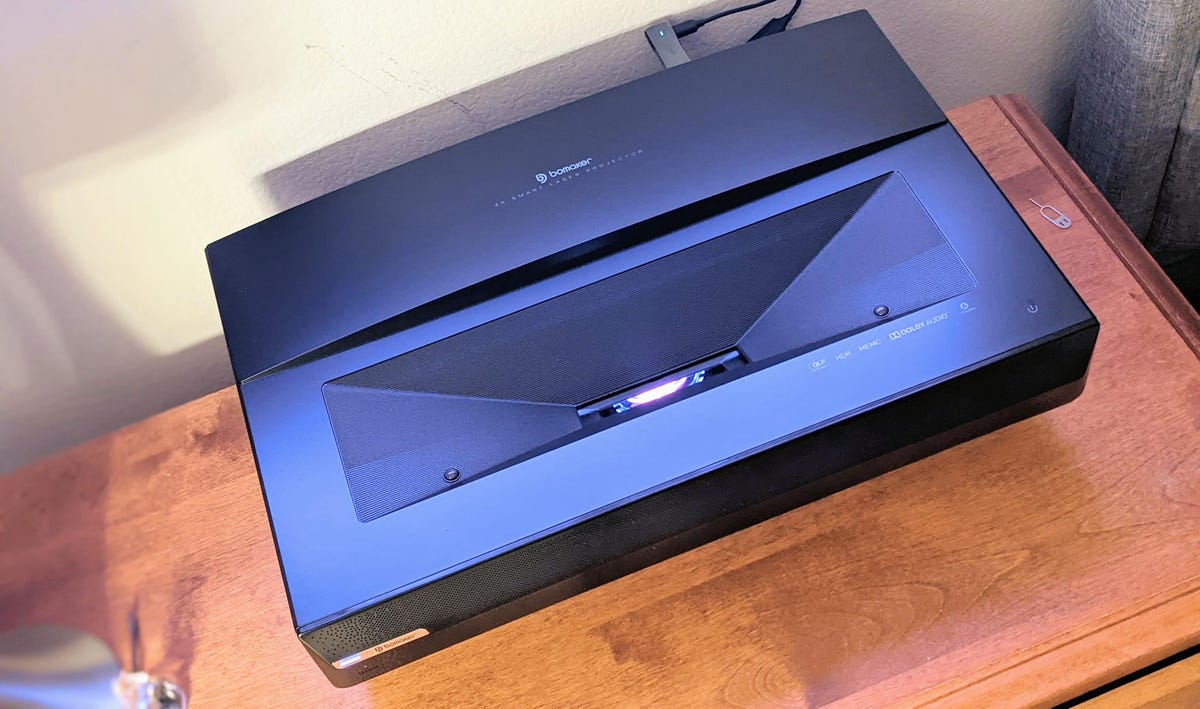
A traditional home projector can create a 100-inch image from a distance of around 10 feet. Depending on the lens, and if there’s any zoom, it can be a few feet farther or closer to the screen. A regular short-throw projector — not an ultrashort one — can create the same size image from around 5 feet. An ultrashort-throw projector can create a 100-inch image from less than a foot from the screen. They do this using a lens with far greater complexity than what you’d find in other projectors.
Most UST projectors use the latest in projector tech, including laser light sources and 4K imaging chips. So UST projectors can have an impressive spec list — most notably in terms of lumens, which are a measurement of brightness. Lumens are one of the most important differences between projectors. UST projectors are often rated for a lot of lumens, and since they’re restricted in their image size due to how their lenses work, the images they create can be very bright.
Brightness isn’t everything
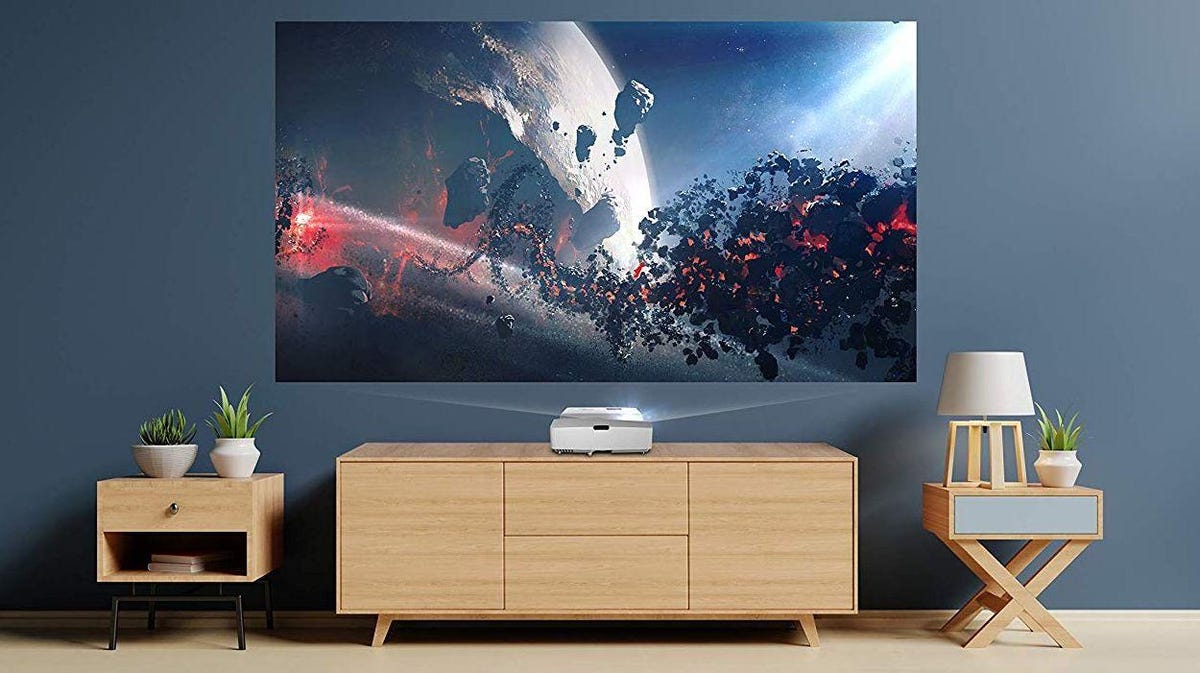
Let’s first talk about those performance claims. All projector companies fudge their brightness numbers, sometimes a little, sometimes a lot. So, a 3,000-lumen projector is almost certainly not 3x brighter than a 1,000-lumen projector. Brighter? Probably, but it’s not as obvious a difference as the numbers would suggest.
Anyway, this is only of secondary importance to what is the main determinator of picture quality: contrast ratio. This ratio is the difference between the brightest and darkest parts of an image. No projector has as good a contrast ratio as OLED or even the better LED LCDs. All UST projectors use the same imaging chips as regular projectors, so in the best case their contrast ratios are going to be the same. The elaborate lenses required for UST projectors to work typically reduce the contrast ratio in the models we’ve seen, so the overall image is going to be worse than far cheaper non-UST projectors. While the laser and LED light sources in many UST projectors can produce deeper, richer colors than what many traditional projectors can produce, lots of projectors are available with LEDs or lasers, negating that advantage.
One of main claimed benefits of UST projectors is an easier install. They’re positioned as something you can just place on a low cabinet and within seconds get an image. Technically this is true, sort of. First, you need a cabinet that’s a very specific height. All UST projectors have a significantly upwards throw. The bottom of the image they create is roughly a foot above the top of the projector. If you want to create a 100-inch image, that’s going to be roughly 4 feet tall. Then add in the foot above the projector and the 6 inches (approximately) of the projector itself: The cabinet can only be around 3 feet tall before your image is wrapping onto the ceiling.
For most people, installation of modern projectors isn’t difficult. A shelf or stand behind a couch will suffice. If there’s no space for that, a traditional short throw on a coffee table will also work.
Then there’s the screen aspect. While often hidden or played down in the marketing, you absolutely need a screen with any projector. Any imperfections in the wall, including the texture of the paint, will be visible in the projected image. Paint is also not designed to focus light, as many screens can do. So you’re losing out on some of that promised brightness by scattering the light throughout your room. There are plenty of budget screens available, but due to the extreme projection angle of UST models, you’re losing some of that performance as a portion of the light reflects onto the ceiling and not at you. If you want a fancy ambient light-rejecting screen — which lets you watch your projector with some lights on — they’re even more expensive. Some of the screens recommended for use with UST projectors cost in the thousands.
Even with one of those ALR screens, no projector can truly compete with ambient light. You can’t have lots of windows and expect to see much of an image during the day. Even if you have lots of lights on in the room, it’s going to wash out the image. USTs aren’t magic, they still have to obey the laws of physics, despite marketing promises.
Then there’s the cost. Even if you directly compare similar brightness and resolution projectors, USTs command a premium. This is due in part to the more complex lenses and higher-end light sources and chips, UST projectors tend to be significantly more expensive than traditional projectors. Ask any photographer how much lenses can get. While it’s not always possible to compare oranges to oranges, we’ll use this as an example of the price difference: the Epson Home Cinema 2350 is a 4K projector with 2,800 lumens brightness for $1,000, while the Epson LS300 UST costs double that and with an increase to 3,600 lumens. The potential difference could also be partially due to marketing: an attempt to make the new “thing” seem more luxury. It could also be the expectation that potential buyers will pay the higher price for the convenience of a “simpler” installation. Add in an ambient light rejecting screen and the price is even higher.
The potential pros
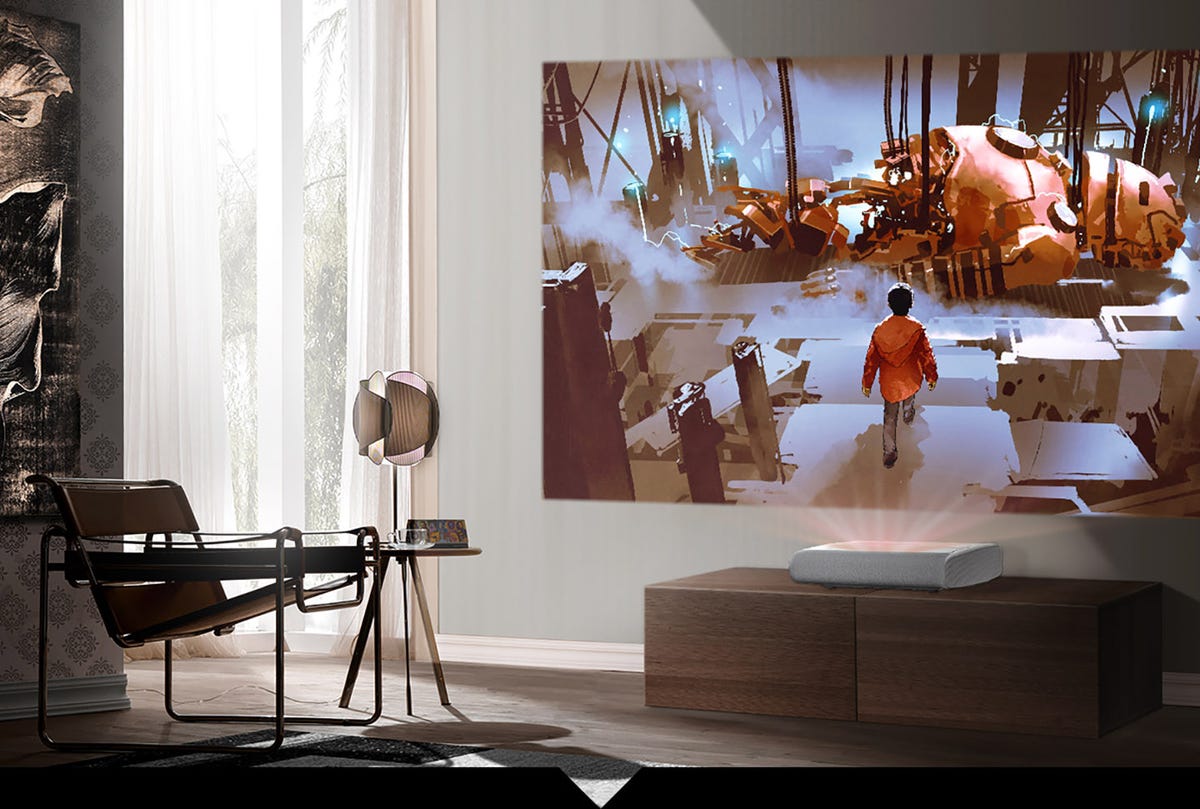
If we put performance and price aside, there are some admittedly interesting benefits to USTs. First, there are situations where traditional projectors just won’t work. In narrower or smaller rooms, it might be hard to get the projector far enough away to create the desired image size. Short throw projectors might work in these situations, but then you have the projector right in front of you, which might not be ideal. Not everyone has a coffee table, after all. If someone can’t drill holes in their ceiling to mount a projector, a UST might be the only projector option.
Specific lumen claims aside, most UST projectors are very, very bright. Since most are designed for a specific range of screen sizes (100 to 120 inches, most commonly), they might not create an image that’s TV-bright, but certainly brighter than many, though not all, regular projectors.
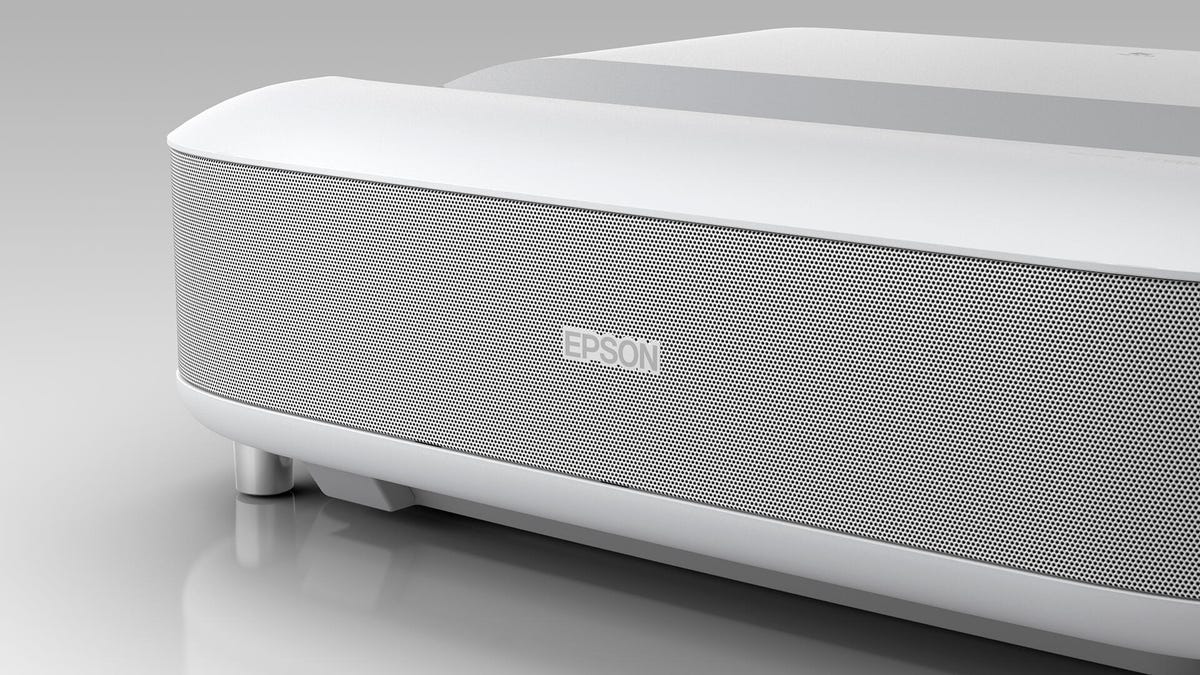
UST projectors often have better built-in speakers compared to other projectors. A big image deserves big sound, and we typically recommend at least a soundbar to go with a projector, or ideally a full surround sound with a subwoofer. Not everyone has the money or space for such a system, and might just want a single box to do it all. In that case, the larger cabinet size of UST projectors lend themselves to more and larger speakers. Many projector companies have partnered with big-name audio companies to help tune the sound. Real speakers will still be better, but the sound of many USTs we’ve heard is about the same as an average soundbar.
Are USTs worth it?
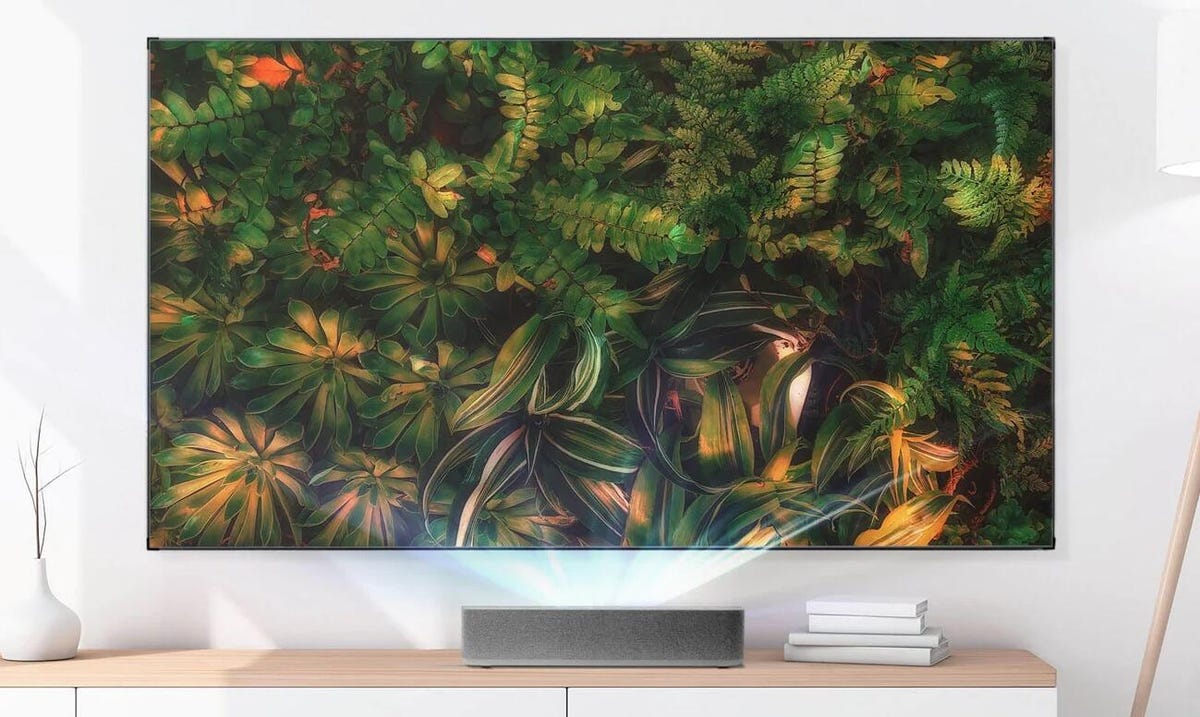
I’ve been reviewing projectors for a long time. I’ve used one as my main “TV” for 20 years. They are, and I’m the first to admit, not as easy to live with as a regular TV. Having a 100-inch “screen” is worth the hassle though, I think. I also think that many more people could have a projector than currently do, since they’re not difficult to set up. So I understand the pitch for ultrashort-throw projectors: big screen, minimal hassle.
The issue with UST projectors is two-fold. First is the cost, which is far higher than projectors with similar performance. Which is to say, you can get a similar, or better-looking image for far less money. You’re paying for the novelty and the promise of easier installation.
It’s that promise that’s the second issue. Every piece of marketing for UST projectors makes it seem that you can just plunk it down in front of any wall and get a TV-like picture. While you will get an image, the reality is more complex. You need a screen to get the promised performance, like you would with any projector, and you need furniture of a specific height or else the image could become lopped off by your ceiling. Even in best case scenario you’re not going to get something that’s as easily viewable in every light condition, like a TV is.
The picture will, however, be far larger than a TV. Having movie theater-sized images in your home is awesome, and I would never talk someone out of having that themselves. I would, however, caution against spending huge amounts of money on it, when you can spend less than $1,000 and get something that looks fantastic.
As well as covering TV and other display tech, Geoff does photo tours of cool museums and locations around the world, including nuclear submarines, massive aircraft carriers, medieval castles, epic 10,000-mile road trips, and more. Check out Tech Treks for all his tours and adventures.
He wrote a bestselling sci-fi novel about city-size submarines and Budget Travel for Dummies. You can follow his adventures on Instagram and his YouTube channel.
